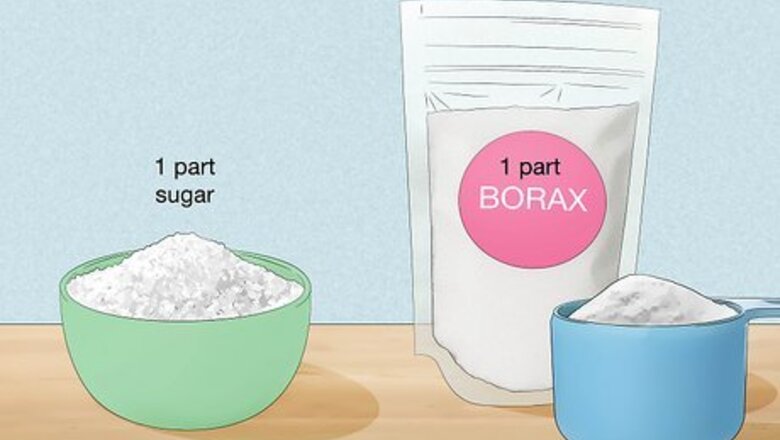
views
- Sprinkle borax or boric acid in dark, moist areas where roaches feed or lay eggs, like underneath baseboards, behind the fridge, or inside electric outlets.
- Try mixing equal parts borax and sugar to trick roaches into eating the insecticide, or combine borax with baking soda for an extra deadly mixture.
- Store borax in an air-tight, dry, clearly labeled container. Wipe down borax-treated surfaces with a damp cloth before using or preparing food on them.
Easy Borax Bait Mixtures
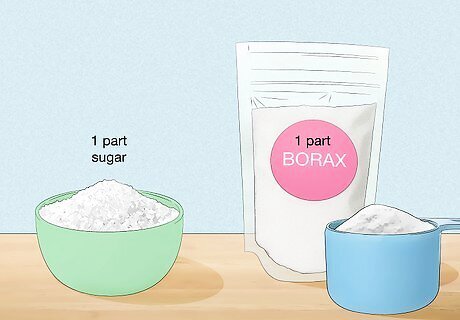
Mix equal parts borax and sugar to bait and kill roaches. Borax is deadly to roaches once they ingest it, but it doesn’t lure roaches on its own. To entice them, add sugar to the mix—the roaches won’t pick up on the borax and will ingest the mixture happily.
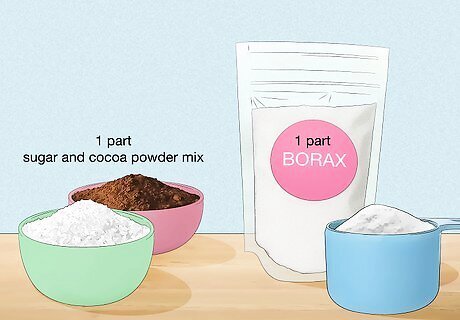
Combine sugar and cocoa powder for another sweet trap. Cocoa powder works the same way as sugar—its sweetness will lure cockroaches to the borax (and ultimately, to their demise). Simply mix roughly equal parts borax and cocoa powder and sprinkle a thin layer in areas with high roach traffic.
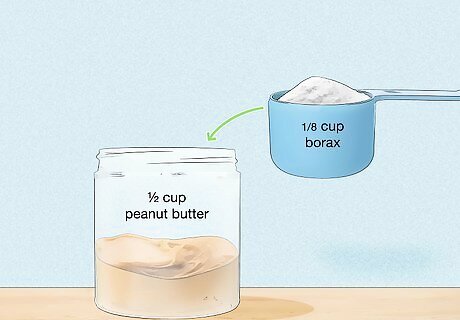
Put peanut butter in an open container and sprinkle it with borax. There’s no mixing required with this bait trap. Just slap some peanut butter into a plastic container with the lid off or onto a large plate, then powder the peanut butter, container, and surrounding area with borax. The roaches will coat themselves in borax on their way to chow down and ingest it when they start eating the peanut butter. Alternatively, mix about ½ cup (120 g) of peanut with ⅛ cup (15 g) of borax or boric acid and fill bottle caps with the mixture to place around your home. The container or plate will help contain the peanut butter and prevent a mess. Borax usually takes up to 72 hours to kill a roach, but on the off chance it dies suddenly after eating, the container also conveniently holds the roach so you don’t have to grab or sweep it yourself.
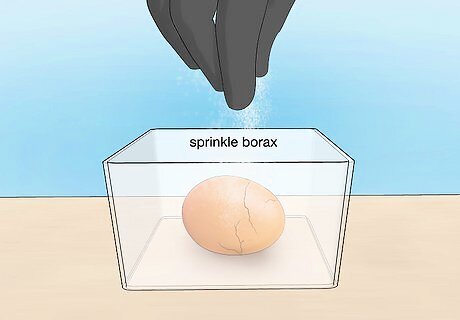
Crack an egg into an open container and dust the yolk with borax. You might cringe at the smell of a spoiling raw egg, but roaches love it. They’ll be on it within a few hours and you can throw the yolk away quickly afterward. Since moisture makes borax less effective, make sure there’s a sprinkling of borax around the dry parts of the container and the surrounding surfaces (in addition to the egg yolk).
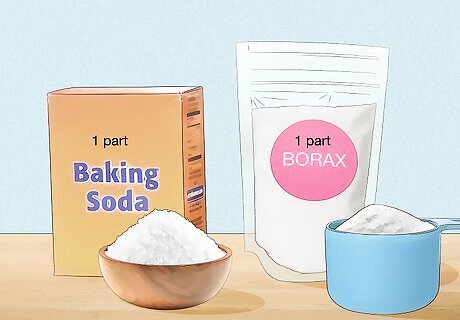
Combine borax and baking soda for an extra deadly pesticide. Baking soda is also toxic to roaches on its own—it causes a buildup of gas in their stomachs, causing the bugs to burst. If you want to make extra sure to take care of these pests, mix equal parts borax and baking soda together, then add some sugar to make it alluring.
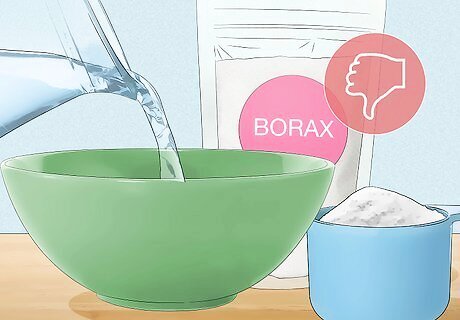
Keep your borax mixtures dry instead of making a spray with water. Some people recommend mixing borax with water to make an easy-to-apply spray. However, moisture makes borax less effective against roaches since part of what makes borax so deadly is its ability to rapidly dehydrate insects. To keep it as potent as possible, make sure it stays dry during storage and after application. If any area you apply borax to becomes wet, reapply more dry borax powder to the problem spot.
Applying the Borax Insecticide
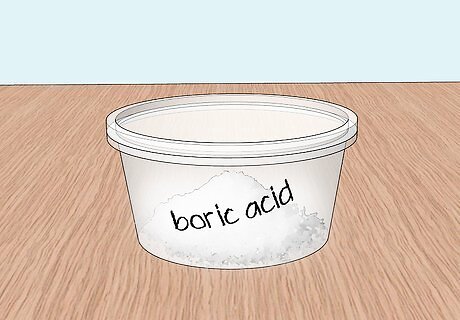
Store your borax or boric acid in a dry, clean container for easy use. Make sure the container is free of any moisture and has an air-tight seal, since water makes the compound less effective (and causes large chunks to form). Clearly label the container and keep it away from food items—proper storage and labeling is key to avoid accidentally ingesting the product. Store your container in a dry, cool place, like a utility closet or cleaning cabinet that doesn’t have any pipes running through it. Try using a recycled ketchup bottle to distribute the insecticide powder in tight spaces with minimal risk. Give the bottle a test squeeze to make sure dust comes out (take care to not get any in your eyes, mouth, or nose). Make sure the hole of the bottle you’re using is large enough for the borax crystals to go through freely.
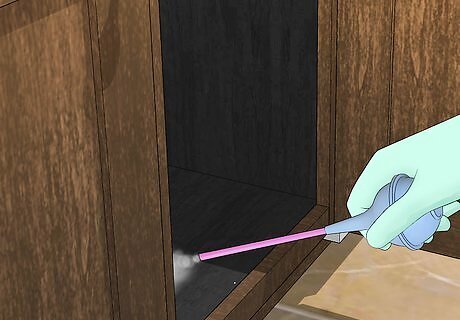
Sprinkle your borax, borax mixtures, or boric acid on target areas. Apply the powder as is, or mix it with a bait like sugar to encourage roaches to ingest it. Spread the borax in a really thin layer so it's not very visible, or else the roaches will try to avoid it. As the roaches walk through the borax, it will stick to their legs and spread throughout the roach colony. When a roach senses powder on its legs, it will use its mouth to clean itself and ingest the toxin. Do not prepare any food on surfaces that have been dusted with borax until they’ve been thoroughly cleaned to avoid accidental ingestion.
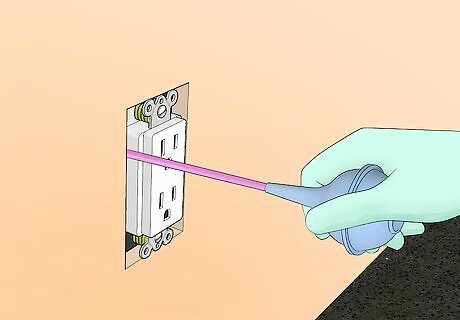
Remove electrical outlet covers and dust inside the walls with borax. This is an easy way to access interior spaces where roaches live and lay eggs. Unscrew the outlet cover, then use a cotton swab to “paint” the inside of the wall with powder. Or, put borax into a cleaned-out ketchup bottle and “puff” the powder inside the wall several times. Replace the outlet covers when done. Do not use dissolved borax, and make sure no moisture enters the outlet as this could lead to electrical fire hazards.
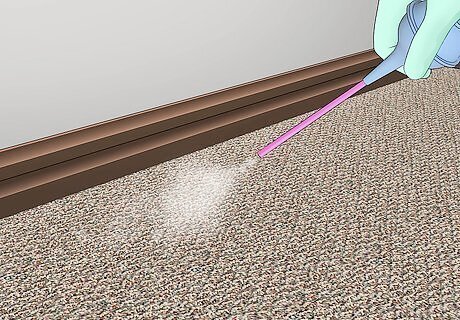
Sprinkle the borax or boric acid powder on any infested carpets or rugs. The borax will destroy eggs and larvae hidden in the carpet fibers. Wait 20 minutes, then vacuum up the powder. Any eggs or insects that were killed will get sucked up. Afterward, deep clean your rug according to its care instructions. Borax dust can cause lung irritation or toxicity in pets and small children. Do not let it sit for a long period of time in an area where it will be kicked up as dust and inhaled.
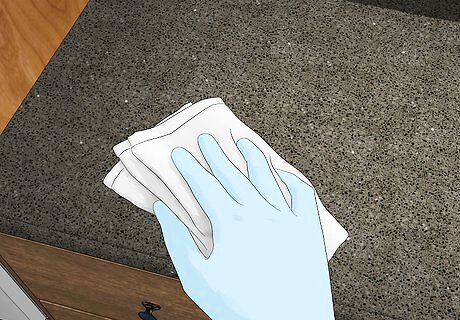
Wipe down treated areas with a damp cloth before using the surface. Although borax isn’t fatal in small doses, it can still cause irritation, nausea, and other side effects when ingested. To avoid this, dampen a cloth and wipe down any surfaces you need to use or prepare food on thoroughly, then go over them again with an all-purpose cleaner or hot, soapy water to eliminate any roach bacteria. Alternatively, spritz the powder with water so it won’t billow into the air, then wipe it up with a damp cloth. Reapply borax if roaches are still a problem. It’s a relatively slow-acting insecticide, but an extremely effective one. Continue repeating the treatment until the roaches are gone.
Finding Roach-Infested Areas
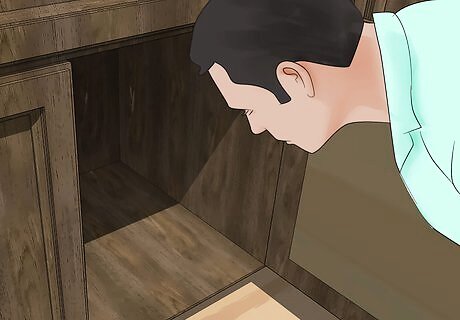
Identify potential roach habitats in your home. Roaches are omnivorous and seek dark, moist places. Inspect areas around the baseboards of your floor, under or around pipes, anywhere there is food waste, behind electrical outlet covers, and narrow, hard to reach spaces, since these are ripe for potential infestation. Roaches also prefer to leave their eggs protected in dark crevices. Also check for any holes or openings around windows or doors, or cracks in exterior walls that might allow roaches to travel inside your home. Caulk or seal these openings to prevent further infestations.

Check these areas for infestation by forcing the roaches out of hiding. Blow a portable fan around the area to disturb the air and provoke an escape response, or use an intense, sudden light source like a bright flashlight or flashing LEDs. Avoid leaving bait out without any pesticide, as it will just encourage more infestation. Alternatively, leave sticky traps near these areas to identify places with roach activity.
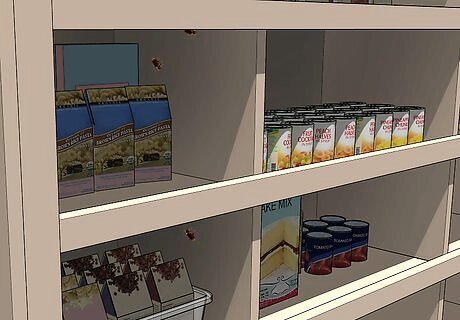
Note any areas where roaches could potentially feed or lay eggs. These are areas with regular food contact, exposure to water, or that are dark and inaccessible. Check places like behind your refrigerator, under kitchen or bathroom sinks, or even in dark drawers or cabinets. Target these areas regardless of whether you notice infestations there or not—borax or boric acid have a strong preventative effect that kills generations of insects over time.
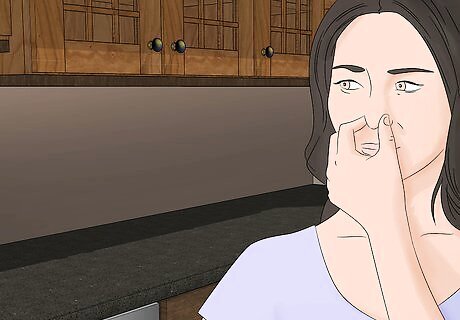
Check for unpleasant smells in areas roaches may live. Cockroaches have a number of scent glands used for communication and courtship that produce a distinctive smell—in some cases the smell is somewhat sweet, but it’s usually oily and musky. This is a telltale sign of an area that’s infested and should be targeted. Some cockroaches are perching insects that can thrive on top of high surfaces like shelves. Inventory and clear these areas for application of the insecticide, too.

Clean up any food debris or standing water before using borax. Make sure this is done before preparing or applying the insecticide. Clean surfaces and a lack of standing water deprive cockroaches of necessary resources. Food bait is unnecessary with borax insecticides, and eggs are less likely to be spread where there are no feeding resources for female insects.
Making Boric Acid from Borax
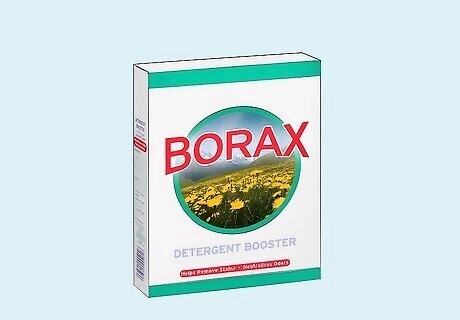
Use borax powder if you’re uncomfortable making boric acid. Boric acid is a more effective insecticide and is equally unlikely to produce any lasting harm in humans. Both can be applied as a powder and have identical methods of killing the insect naturally. Boric acid is a more refined and processed version of borax, which contains more sodium and is a naturally occurring mineral. Boric acid is a more potent insecticide than borax, although both are widely used and highly effective.
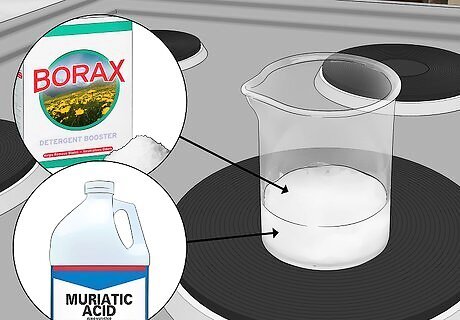
Mix hydrochloric (muriatic) acid, water, and borax to make boric acid. Gather about 130 grams (4.6 oz) of borax, 65 mL (2.2 fl oz) of 33% hydrochloric acid, and distilled water. Mix the borax with about 500 mL (17 fl oz) of water (or enough water to completely dissolve the borax) in a glass measuring cup or container, then place the mixture on a hot plate to heat it up and aid the dissolving. Then, add the hydrochloric acid to the mixture and remove it from the heat. Hydrochloric acid is sold commonly as muriatic acid to acidify swimming pools. Handle hydrochloric acid with extreme caution. Use gloves, eye protection, and respiratory protection (in a well-ventilated area) to avoid harm. Have baking soda on hand to neutralize any unintended acid reactions.
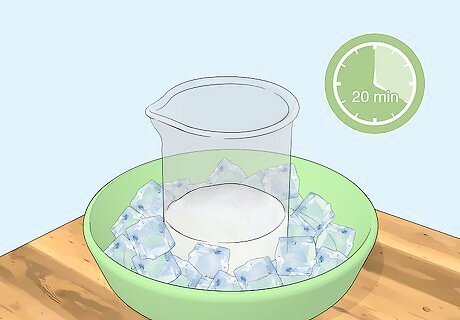
Place the solution in an ice bath for 20 minutes to cool it. Take your glass container and place it in a larger bucket of ice water for about 20 minutes. At this point, you’ll notice white boric acid crystals forming in the bottom of the container. Remove the glass container from the ice, place plastic wrap over the top, and put it in the freezer for another 90 minutes to get the best yield. Alternatively, purchase premade boric acid since it’s less dangerous than the hydrochloric acid needed to produce it.
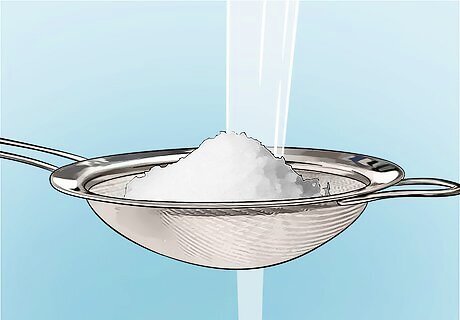
Filter out the boric acid crystals and lay them out to dry overnight. Pour your boric acid crystals and the acidic saltwater they’re now sitting in through a funnel with a paper filter inside. Once all the water has drained out of the filter, lift it out of the funnel and place it on top of a clean cloth. Tear open the filter and spread the boric acid crystals out in a thin layer (using a non-cooking stirring rod or gloved hands) to dry overnight. Drain the water into a separate container (not straight into the drain) since it is acidic and toxic. Neutralize it by adding baking soda—when a litmus paper test says the water is about 7pH (neutral), it’s safe to pour down the drain. Make sure no pets or children can access the drying boric acid crystals. Place them in a locked room, on a high shelf, or in another safe area. Once the crystals are fully dried, place them in a clean, dry, clearly labeled container for storage.















Comments
0 comment